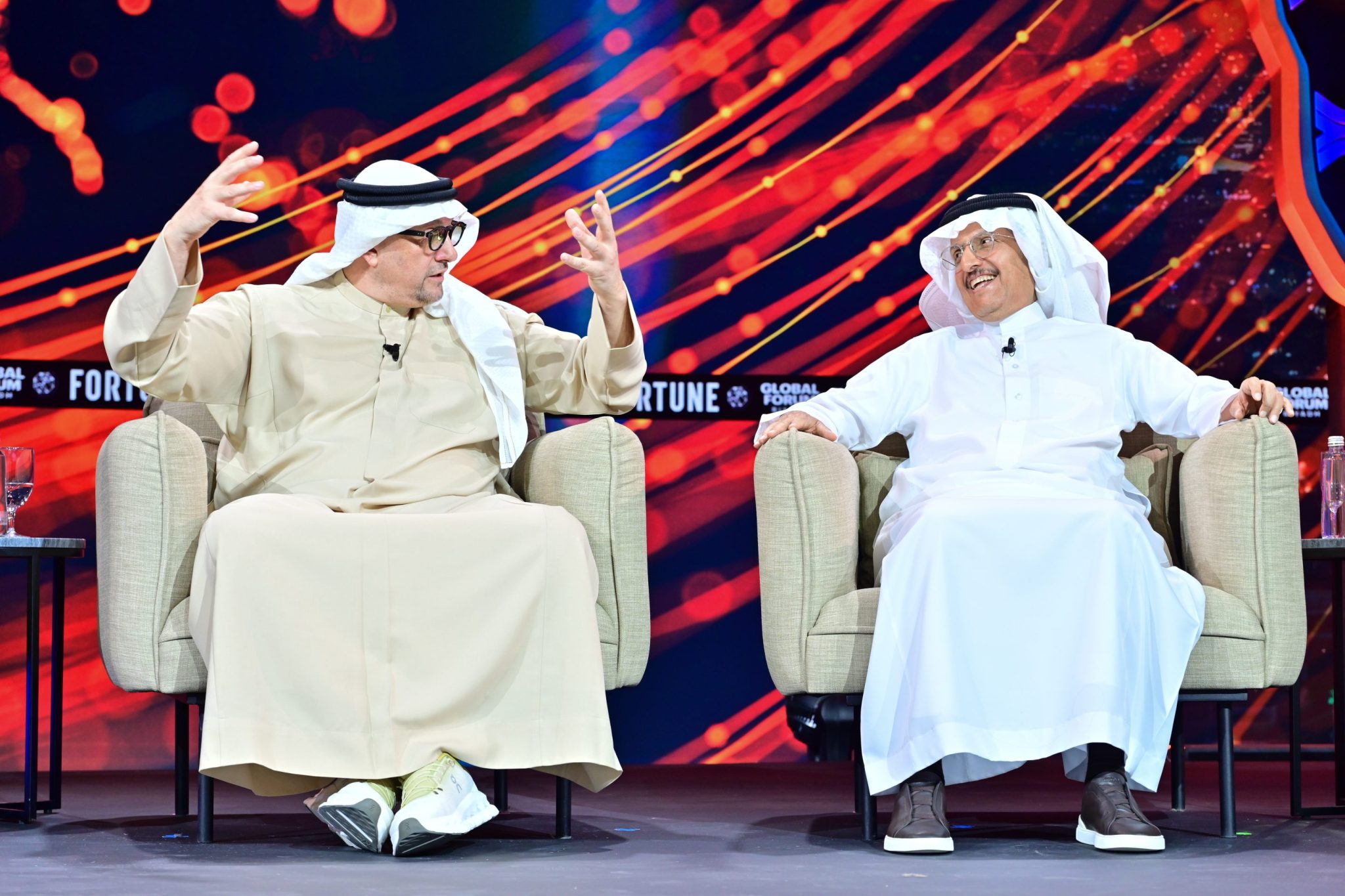
The global energy transition continues to press forward, but tariff wars and the rising politicization of renewable power is hurting the growth of clean, accessible electricity worldwide, said the founder and chairman of Saudi Arabia’s ACWA Power.
Speaking at the Fortune Global Forum in Riyadh, ACWA chairman Mohammad Abunayyan and others discussed the global need of relying on the right mix of solar, wind, and battery-storage power, as well as fossil fuels and nuclear power to produce enough electricity for people in every part of the world to have the most secure, clean, and affordable energy, especially as renewables increasingly become more cost-competitive.
But Abunayyan cautioned against the “great disturbance” of rising trade barriers—without specifically mentioning the trade wars initiated by U.S. President Donald Trump—and he praised China for leading the world in the energy transition. He said politicians should remove themselves more from energy politics. It’s harmful when world leaders say green energy or wind power is “not good,” he said, again not naming Trump and his attacks on wind and other renewables.
“These barriers with imports, exports, all of these issues, they are making it more complicated for the world. They are making it very expensive for everybody. We are just creating barriers unnecessarily for no reason. The whole globe needs each other,” Abunayyan said. “There’s no one country that does not need the others. We are all human on this Earth. We need to work together, we need to have integration, and we need to think about how we create something that’s good for all our people on this Earth.”
Apart from being a leading renewables developer, ACWA also is building the world’s largest green hydrogen project in Saudi Arabia to produce ammonia, the NEOM Green Hydrogen Project, which is slated for completion in 2027.
ACWA, which is 50% owned by the Saudi sovereign wealth fund, has grown into one of the largest renewable energy and water desalination players in the world, developing projects in Saudi Arabia and throughout Asia and Africa, including China. The China Southern Power Grid owns a major stake in some of ACWA’s Asian wind subsidiaries.
Abunayyan also praised “Chinese innovation” for leading the energy transition, especially with China controlling the largest supply chains for wind turbines, solar panels, and battery components. “If there is no China, there is no energy transition,” he said. “We have to give full credit to China innovation, scale, competitiveness, and giving solutions to the world that they will be able to go into an energy transition.”
Likewise, Abu Dhabi-based Masdar is helping the United Arab Emirates and other Middle Eastern countries transition to renewables for domestic power, even as they remain major global oil exporters.
Striking the right balance
Masdar CEO Mohamed Jameel Al Ramahi said the UAE aims to have 50% of its electricity generated by renewables by 2030. One key component is Masdar’s “round-the-clock,” 1 gigawatt renewable project that broke ground in Abu Dhabi in October. The project is combination of solar power and battery storage—coupled with AI software management—that will provide power 99% of the time, he said, and eliminates the intermittency problems cited by renewable energy critics.
“We can now control the power of the sun. We store during the day, and we generate during the day, and then we dispatch during the night,” Al Ramahi said. “This could be a blueprint and replicated elsewhere.”
The CEO of France-based, multinational utility giant Engie agreed about the need to embrace both renewables and energy diversification.
Engie is investing in renewables more than any other power source, CEO Catherine MacGregor said, but that doesn’t mean only building solar farms in every corner of the world. Doing so would lead to an unreliable, inefficient energy grid.
“It’s not going to be one technology saving the world,” she said. “It’s the very smart integration, technology-based smart grid that is going to be the solution on the power side.”
Still, it’s critical to focus on making new electricity generation as green as possible—whether it’s new demand or replacing old assets—while leaning into whatever low-carbon generation sources make the most sense for every geography or nation.
“We are more confident than ever that we’re pointing in the right direction with the caveat that the projects have to be good projects,” MacGregor said. “You need to provide the right electrons at the right times. The electricity that you produce has to have the right profile that customers need.”
 https://www.profitablecpmrate.com/nsirjwzb79?key=c706907e420c1171a8852e02ab2e6ea4
Skip to content
https://www.profitablecpmrate.com/nsirjwzb79?key=c706907e420c1171a8852e02ab2e6ea4
Skip to content 